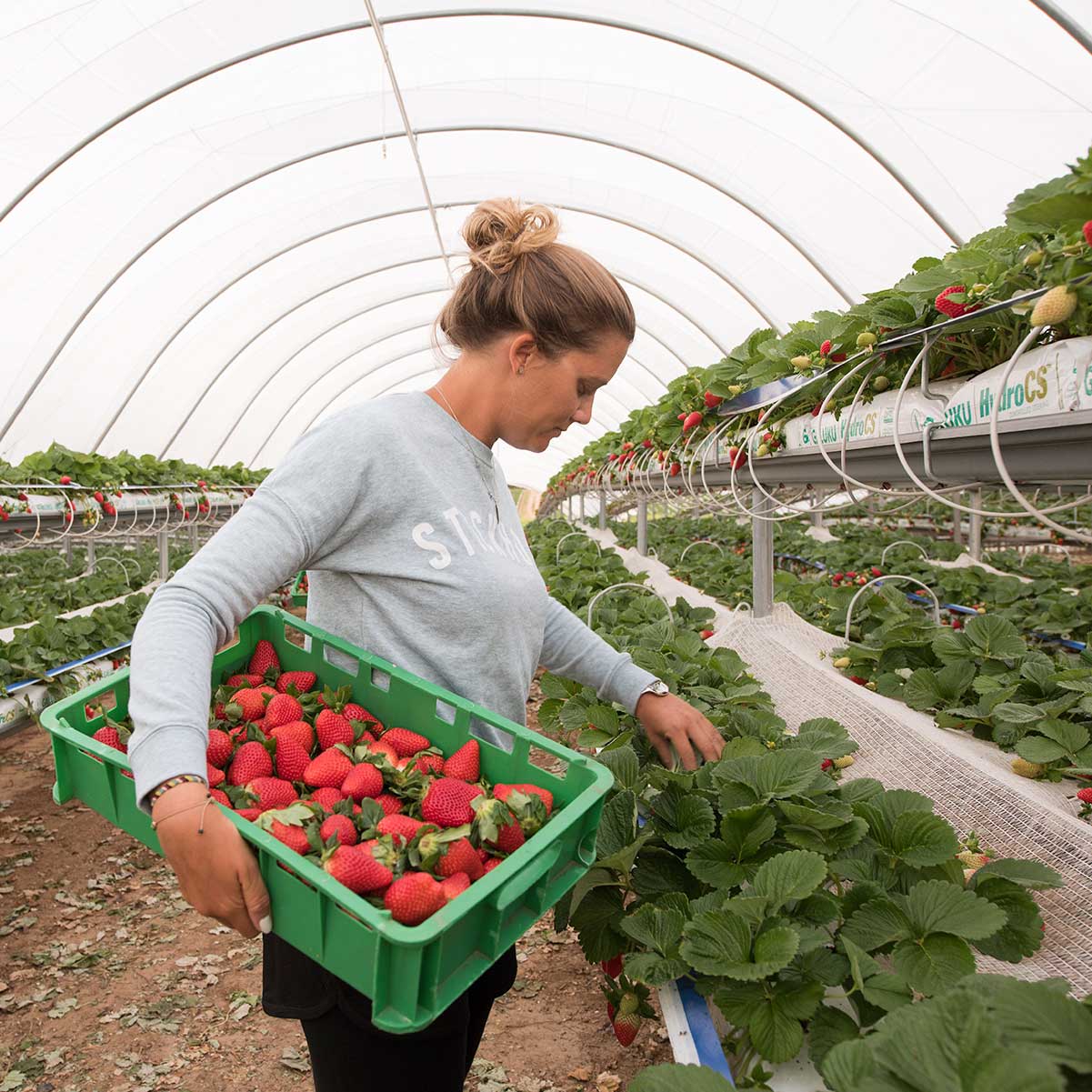
Top Tips for Growing Strawberries Commercially
When it comes to growing strawberries as a commercial crop, we know you want to produce the best fruit you can. To help you start growing great strawberries, or improve the crop you have, our experienced team has put together their top tips for growing strawberries commercially. If you require more expertise and support, book a consultation to see how we can help you.
Choose the right strawberry
Like so many other crops, there are countless varieties of strawberries available. When it comes to growing commercially, what you choose is of paramount importance. The right type and variety of berry is pivotal on the success of your crop. When choosing your variety, consider your location and what harvest or market timing you require. Additionally, think about what climate considerations you have.
Timing is everything
For the best outcomes for your crop, balance and timing make a difference. For improved financial outcomes, the goal is to steer and balance growth to hit the target market window with both volume and high quality. Consideration needs to be given on variety, seasonal climate, available tools (infrastructure) in order to steer the crop into the desired production window. When a crop isn’t balanced between vegetative and generative growth early, and steered correctly throughout the season, excessive biomass (canopy) is generated. This growth happens at the expense of fruit production, meaning energy is taken away from producing strawberries in your crop.
Additionally, when the canopy of your strawberry crop becomes excessive, overcrowding and fungal disease is more likely to occur. This results in lower marketable yields and reduced overall quality due to spoilage. Larger vegetative growth also makes it harder for workers to find fruit, making your harvest more difficult and less efficient. This can significantly increase the cost of production.
A further hazard to steering the crop vegetatively is the reduction in light interception, which in turn reduces the quality of your fruit. Your strawberry crop is more likely to yield a lower quality berry that is thinner walled, watery, lacking in flavour with a reduced shelf life.
While some growers may employ remedial husbandry to reduce biomass and correct the trajectory of their commercial strawberry crop, this approach comes at a significant cost, and still doesn’t make up for many of the negative impacts of poor management.
Less is more
It may feel like the denser the crop the more fruit you will yield, but this is not necessarily the case for tabletop strawberry growing. It comes back to individual grower goals, whether your wish is to achieve genetic potential per plant or maximum yield per unit area. Experience across all crops suggests one rarely guarantees the other, the balance complicated by labour efficiency.
Like many things, less can be more! Take care not to overreach on crop density when planting. Follow the density recommendations for the variety or varieties of strawberry you are planting. The right density will promote a balance between good yields and fruit quality. When you undertake excessive planting, the over density is actually prone to increasing productions costs while simultaneously reducing the yield per plant. Plus with the aforementioned overcrowding issues, you increase your chance of spoilage throughout your crop.

Quick Takeaways
- Choose the right fruit variety for your farm and climate
- Consider market timing when selecting your strawberry variety
- Timing is a big factor for crop success
- Steer your strawberry crop well throughout it’s growth to avoid excessive canopy
- Be wary of too much density, overreaching on crop density can lead to lower yields and reduced berry quality
Looking for more help growing quality strawberries? Download our free intro guide to grow strawberries in coir substrate.


